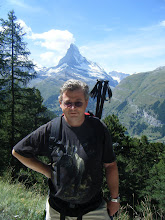Spain's wildlife treasure











For our 50th birthday this year in WWF we put together a book and a set of web pages on 50 headline issues from the last five decades. Originally, they were to be billed as 50 "big wins" but it became evidence that a lot of the issues still hang in the balance. Moreover, we didn't want to take all the credit for achievements that were the result of concerted effort from many quarters - the negotiation of the Convention on International Trade in Endangered Species, for example.
One of the achievements listed that can legitimately be regarded as a "win", however, and where we can take a major part of the credit, is the creation of Donana National Park, near Sanlucar de Barrameda, on the mouth of the Guadalquivir, in Spain. WWF founder members, including Luc Hoffmann, worked with other naturalists, starting in 1961, to buy 10,000 hectares of land in Donana. The primary object was to protect the site as a key bottleneck for migratory birds flying south in the winter. Six million birds pass through the area each winter, with 400,000 staying there until spring, while a further 30,000 breed there. The site was declared a National park in 1969 and now covers an area of 542 square miles. It is also a refuge for the very rare Iberian lynx.
We visited the park last week; not the best time for seeing the birds (although we did see avocets, spoonbills and an imperial eagle, not to mention feral horses, fallow deer and red deer, but not lynx). However, we did have the opportunity to see the other reason why the park has become famous; namely, it's habitats, which include forests (stone pine and cork oak), spectacular sand dunes and saline wetlands (mostly dried out to a salty crust after the summer, it must be said). For me, the sald dunes were the best part, having worked on Irish sand dunes for many years. It was also interesting to see the traditional houses that existed in the park, when people still lived there.
Donana is one of the biggest and most spectacular national parks and it's conservation in the political climate that existed in Spain in the 1960s was a major achievement. There are ongoing issues that still threaten it - the lowering of the water table through extraction of water for agriculture in neighbouring areas, the risks from nearby mines and a recent oil spill, which, thankfully, was diverted into the Guadalquivir river. Above all, it's future in a changing climate is uncertain.
I would hope to go back in the winter sometime but at any time of the year it's worth a visit.
In the coming days I'm going to write a bit more about our holiday in Spain, and after Christmas I hoe to write about another of Europe's most spectacular parks - Bialowieza, in Poland - when I visit it in the snow.


0 Comments:
Post a Comment
Subscribe to Post Comments [Atom]
<< Home